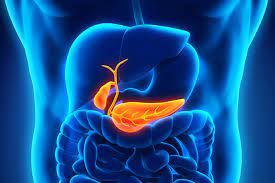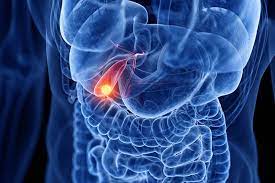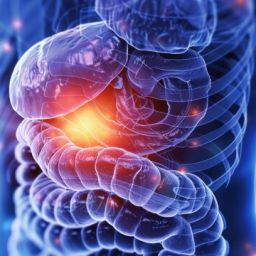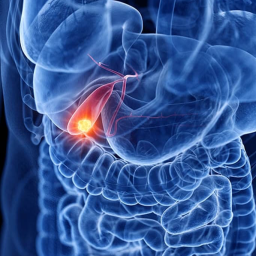
1. Understanding Bile Duct Cancer
Bile duct cancer (cholangiocarcinoma) can develop in both intrahepatic (within the liver) and extrahepatic (outside the liver) bile ducts. The cancer obstructs the flow of bile, leading to a range of symptoms including jaundice, abdominal pain, and itching.
- Types of Cholangiocarcinoma:
- Intrahepatic Cholangiocarcinoma: Occurs in the bile ducts inside the liver.
- Extrahepatic Cholangiocarcinoma: Develops in the bile ducts outside the liver, closer to the gallbladder and small intestine.
- Perihilar Cholangiocarcinoma: A subtype that forms where the left and right bile ducts meet.
The prognosis of bile duct cancer is often poor, primarily because it is frequently diagnosed at an advanced stage. Therefore, preventive measures and early detection play a critical role in improving outcomes.
2. Risk Factors for Bile Duct Cancer
Several factors increase the risk of developing bile duct cancer. While some of these factors cannot be controlled, many can be mitigated through lifestyle choices and medical interventions.
2.1 Chronic Liver Diseases
Chronic liver conditions, such as cirrhosis and hepatitis, significantly increase the risk of bile duct cancer. These conditions lead to long-term inflammation and scarring of the liver, creating an environment that promotes the development of cancer.

- Cirrhosis: Chronic liver disease, caused by alcohol abuse, viral hepatitis, or fatty liver disease, results in scarring and poor liver function. This damage can contribute to the development of cholangiocarcinoma.
- Hepatitis B and C: Chronic viral infections like hepatitis B and C lead to liver damage, increasing the risk of liver cancer, including bile duct cancer.
- Primary Sclerosing Cholangitis (PSC): A rare condition causing inflammation and scarring of the bile ducts, which significantly raises the risk of cholangiocarcinoma.
2.2 Bile Duct Inflammation
Bile duct inflammation, especially when chronic, is another key risk factor for bile duct cancer. Conditions that affect the bile ducts, such as cholangitis and choledocholithiasis (the presence of gallstones in the bile ducts), can predispose individuals to cancer in the bile ducts.
2.3 Exposure to Chemicals
Long-term exposure to certain chemicals can increase the risk of bile duct cancer. For example, individuals working in industries where they are exposed to toxic substances such as asbestos, dioxins, and chemicals used in the petroleum industry may be at greater risk of developing bile duct cancer.
2.4 Age and Gender
Bile duct cancer tends to be more common in people over the age of 65, and men are slightly more likely to develop it than women. While these factors cannot be controlled, understanding that the risk increases with age is important for early detection and monitoring.
2.5 Genetic and Family History
Genetic mutations or a family history of bile duct cancer can play a role in the development of this disease. Certain inherited conditions, such as Lynch syndrome or familial adenomatous polyposis, can increase the likelihood of bile duct cancer.
3. Preventive Measures for Bile Duct Cancer
While some risk factors for bile duct cancer cannot be controlled, such as age and genetic predispositions, several lifestyle changes, medical interventions, and early detection methods can help reduce the risk of developing the disease.

3.1 Addressing Chronic Liver Conditions
The most significant step in preventing bile duct cancer is managing chronic liver conditions. If you have chronic hepatitis or cirrhosis, it is essential to follow your doctor’s advice on managing these conditions.
- Hepatitis Vaccination: For those at risk of hepatitis B, vaccination can significantly reduce the chances of developing chronic infection. Hepatitis B vaccination is particularly recommended for healthcare workers and those in high-risk groups.
- Antiviral Therapy: Antiviral medications for chronic hepatitis B and C can help prevent further liver damage and reduce the risk of bile duct cancer.
- Monitoring Cirrhosis: Regular monitoring and treatment for cirrhosis are vital. This includes lifestyle changes, such as reducing alcohol consumption, weight management, and using medications as prescribed.
3.2 Regular Screening and Monitoring
Early detection is crucial in improving survival rates for bile duct cancer. Regular screening, particularly for those at high risk, can help detect cancer in its early stages, when treatment is more effective.
- Endoscopic Procedures: Endoscopic retrograde cholangiopancreatography (ERCP) is a procedure used to detect blockages in the bile ducts. This can be helpful for those at risk of bile duct cancer due to primary sclerosing cholangitis or other conditions affecting the bile ducts.
- Ultrasound and Imaging: Regular ultrasounds and imaging techniques, such as CT scans or MRIs, may be used to monitor for signs of bile duct cancer in patients with chronic liver disease or other predisposing factors.
3.3 Healthy Diet and Lifestyle Choices
Maintaining a healthy lifestyle is critical in reducing the risk of many cancers, including bile duct cancer. While no specific diet has been proven to prevent bile duct cancer, eating a well-balanced diet rich in fruits, vegetables, whole grains, and lean proteins can improve overall health and reduce the risk of liver disease, which in turn lowers the risk of bile duct cancer.
- Avoid Alcohol Abuse: Chronic heavy drinking is a major risk factor for liver disease and cirrhosis, both of which increase the risk of bile duct cancer.
- Maintain a Healthy Weight: Obesity can contribute to fatty liver disease, which can eventually lead to cirrhosis and an increased risk of bile duct cancer.
- Exercise: Regular physical activity can help maintain a healthy weight, improve liver function, and reduce the risk of metabolic diseases like diabetes, which can increase the risk of liver disease.
3.4 Avoiding Environmental Toxins
Reducing exposure to toxic substances is crucial for preventing bile duct cancer, especially in occupational settings.
- Asbestos Exposure: Asbestos exposure is known to increase the risk of several cancers, including bile duct cancer. Employers must adhere to safety standards to minimize workers’ exposure to asbestos.
- Chemical Safety: For those working with harmful chemicals, adhering to safety protocols and using personal protective equipment (PPE) can help reduce the risk of toxic exposure.
3.5 Genetic Counseling and Testing
For individuals with a family history of bile duct cancer or genetic conditions like Lynch syndrome, genetic counseling and testing may help identify whether they are at higher risk of developing the disease.
- Genetic Testing: Genetic tests can identify mutations that may increase cancer risk, allowing for personalized prevention and monitoring plans.
- Family History: If bile duct cancer runs in your family, discussing your family history with your doctor can help guide the necessary steps for surveillance and early detection.
While bile duct cancer remains a rare and aggressive disease, taking preventive measures can help reduce the risk and improve the chances of early diagnosis. Addressing chronic liver diseases, maintaining a healthy lifestyle, avoiding environmental toxins, and ensuring regular screenings are critical steps in preventing this type of cancer.
For those at higher risk, early detection is key. Routine check-ups, lifestyle modifications, and awareness of the symptoms of bile duct cancer are important aspects of prevention. While there is no guaranteed way to completely prevent bile duct cancer, these measures can significantly reduce the likelihood of developing the disease and improve overall health outcomes.
With ongoing research into bile duct cancer, there is hope that better preventive strategies, more effective treatments, and ultimately a cure will emerge.


